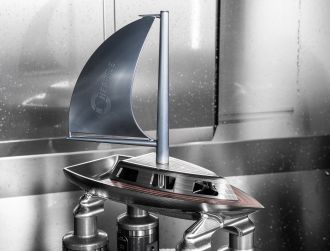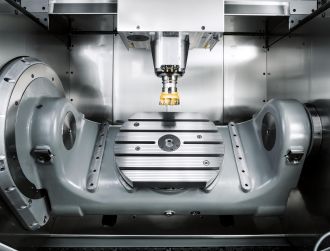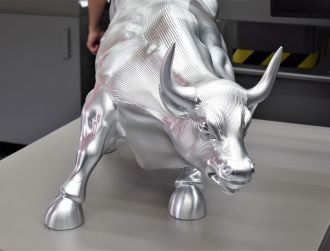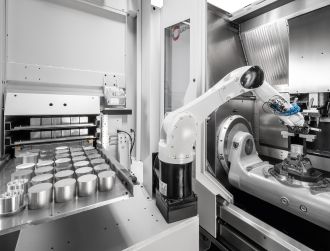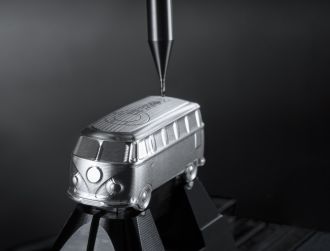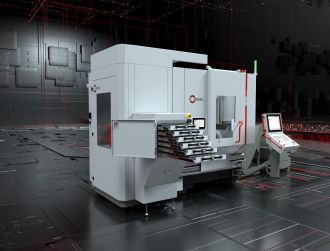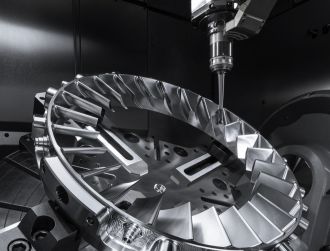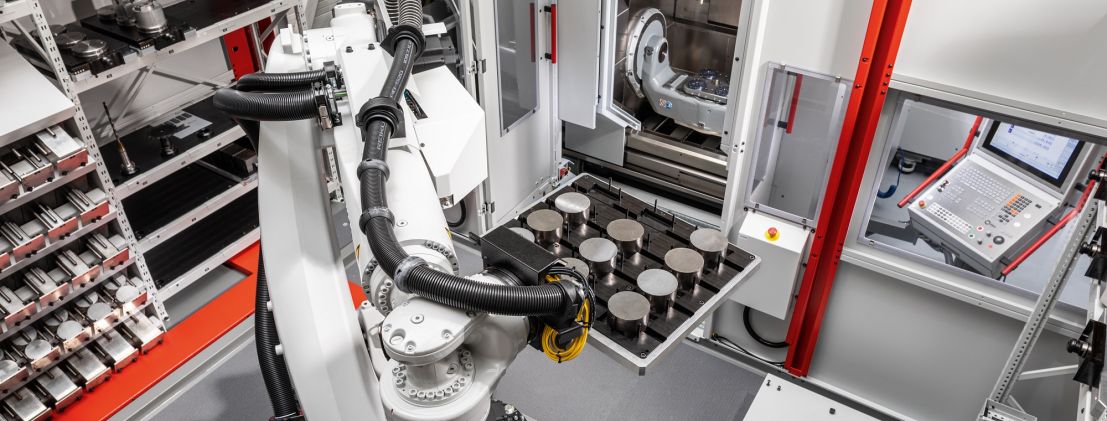
Automation runs through Hermle's veins
22 years ago, Hermle started developing its own automation solutions for its 5-axis machining centres. Much has changed since then: the focus is no longer on reducing setting up times, but rather on even longer automated production runs. and digitalization is generating further impulses of its own. Hermle's basic philosophy, however, remains the same: one provider for a complete package – from the initial draft for a plant through to servicing beyond the guarantee period.
In 1998, the present Chairman of the Supervisory Board of Maschinenfabrik Berthold Hermle AG, Dietmar Hermle, laid down the basic plan for what has become a wide-ranging automation programme for 5-axis machining centres from Gosheim: He called for a proprietary solution that would enable Hermle to satisfy all customer requirements from the initial design to service provision beyond the guarantee period. Gerd Schorpp, CEO of HLS Hermle Systemtechnik, recalls the remit he received from the Chairman of the Board at the time: "A one-stop shop, no third-party interfaces." On this basis, Schorpp set up a subsidiary for designing and providing individual solutions as well as integrated robotic plant for fully automated component manufacturing. Today, it is clear how successful that venture was: "We started with 6 employees – now we have nearly 100," as the CEO points out.
At first, the aim was to reduce setting-up times. "To allow for setting up in parallel with main production runs, we at Hermle developed the first pallet changer," says Schorpp. While one component is being machined, the user can set up and mount another one. As soon as the first component is finished, the system switches the pallets, so the machine can commence the next machining cycle in a very short space of time. "Users saw that the principle worked, so we went on to the next step. If it works with two pallets, why not with several? So we enhanced our pallet changers by adding storage modules," relates Gerd Schorpp. Instead of just two, it is now possible to process up to 18 pallets in sequence. This significantly increased the running times for these precision machines.
Entry into the premier league
With the pallet changers, Hermle's focus was on maximum automation flexibility. "We weren't looking to save every last second, but rather to be as flexible as possible," explains Schorpp. But to maximize productivity it was necessary to concentrate on a different principle: 15 years ago, Hermle joined the Premier League for automation with the introduction of its first robot system. "Right from the start, we recognized the importance of system neutrality, something that we don't have with the pallet changers. In other words, the requirement is that the robot systems are compatible with almost all Hermle machines," explains HLS' CEO.
Where a robot system is used, it generates autonomous run times. For in contrast to a simple pallet changer, the robot can deal with the component and tool handling as well as the pallets. "And that know-how is the secret weapon that set us apart from others on the market at an early stage," reveals Gerd Schorpp. However, this has not made pallet changers superfluous. "Especially for large and heavy workpieces, there is still no alternative available." Whereas the fast and flexible robots can handle parts weighing up to 420 kg, the PW 3000 pallet changer can cope with up to three tonnes. This changer has been specially designed for Hermle's C 52 U und C 62 U series.
The pallet changer range expanded in parallel with the main product lines – as soon as a new machine entered the market, the corresponding pallet changer was made available too. In the early years that appeared to be the logical thing to do. However, the time came when the machine range was basically complete, while the competition was catching up. Third-party automation solutions began to populate the market. "Even though these providers cannot match what we stand for – complete packages and service from a single supplier – we had to respond to rising pressure to reduce costs," explains Schorpp.
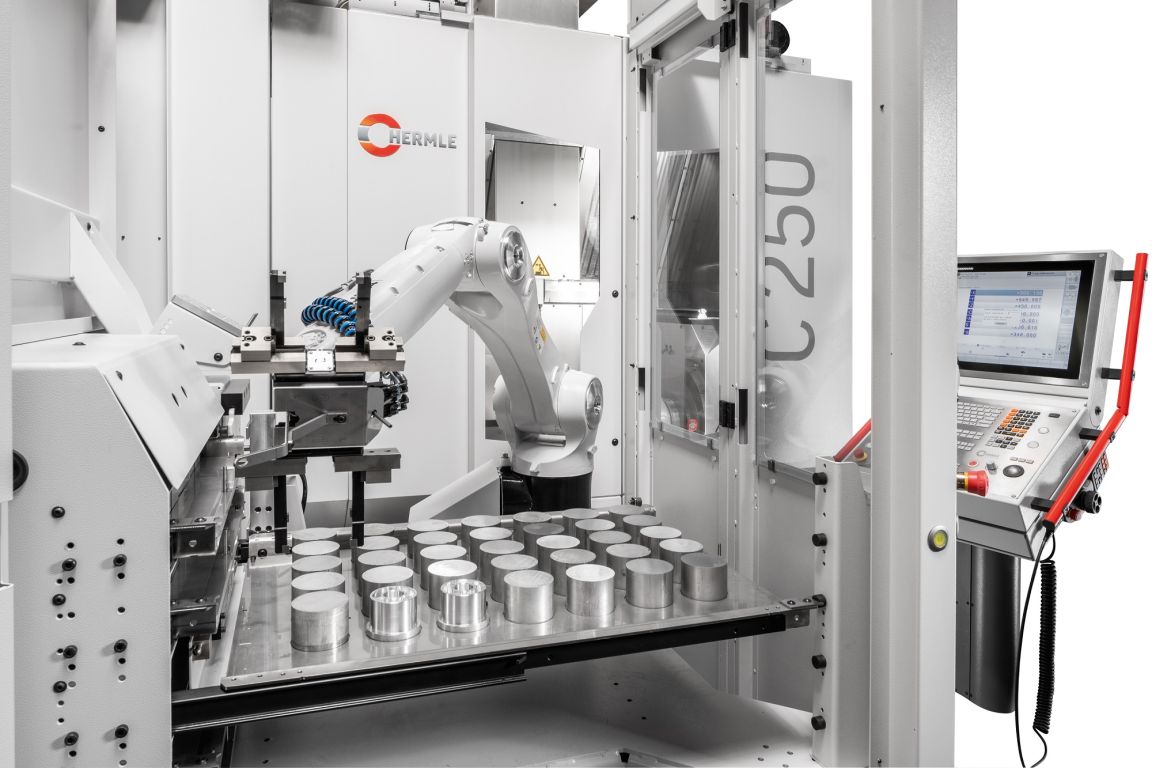
Ready for a new approach
To provide customers with an affordable entry into the world of automation, Hermle sought a solution that would be compatible with several machines and could therefore be produced efficiently in large quantities. Further specifications were to provide space for even more pallets and intuitive operation. In addition, the machining centre was to remain accessible so that the user could also operate it manually according to requirements. "This is important so that blanks that are too heavy for the handling system can be machined. For the limiting factor regarding component weight is always the automation system, not our machine," emphasises Schorpp. In 2017, the HS flex system premièred.
This flexible handling system is compatible with six machine types, so it can be manufactured more cheaply than conventional pallet changers. It provides either one or two storage modules in a rack arrangement, allowing for up to 40 pallets. The HS flex automation system is adapted to the front section of the respective machining centre. This is necessitated by the gantry design. At first, this arrangement raised doubts with some customers: "Some users were initially concerned that it would restrict access to the working area for manual operations too much. But in fact the intermediate space is sufficient, and so far all customers have been convinced through the practical demonstrations." Access during setting up and automatic mode is blocked for persons by means of a double door. Hermle programmed the Hermle Automation Control System (HACS) to provide for intuitive operation and control. This software computes run times and tool use in advance, and also provides an overview of the system, work plans, pallets, tasks, tools and more. "We designed HACS so that it would reduce organizational downtimes," adds Schorpp.
The latest addition to the automation range is the HS flex heavy handling system. This system, introduced in 2020, can handle component weights up to 1200 kg and be used to automate four Hermle machine models, including the C 650 for the first time. Although the pallet changers can handle even greater weights, they are no longer completely in line with the current philosophy. "The main aim with pallet changers is to optimize setting up in parallel with the main running operation. In recent years, though, productivity has emerged as a salient factor. So the objective now is to set up autonomous runs that do not require operator interventions. And that is something that we can only achieve with flexible systems and a lot of storage capacity," explains Gerd Schorpp.
The question as to whether an HS flex system or a robot system makes more sense has to be answered on a case-by-case basis. For a robot can serve several machining centres, making it possible to set up linked plant sections. "Combining such a system with corresponding die storage and pallet storage units enables us to increase capacities significantly. Also, the handling systems and robot systems achieve operational running times between 5000 and 7000 hours per year, whereby a robot system involves considerably less manpower," points out Schorpp.

Designed for individual applications and extremely flexible
The current HLS Systemtechnik robot solutions range from a robot system for small pallets and components (RS 05-2) up to the RS 3 system with a transport weight rating of 420 kg. Thanks to their exchangeable grippers, the robots can handle both pallets as well as workpieces and blanks held in readiness in dies. "Our customers can increase their production depth and capacities without the need for more manpower – both of which are cogent arguments in times of dynamic demographics and a shortage of specialist workers, especially in the context of the current Corona crisis," as Schorpp underlines. The plant is tailored to individual customer specifications, and it is operated via the Soflex control tool. "If a robot has to interact with more than three machines, we implement a linear axis. This allows for sufficient freedom of movement so that measurement machines and cleaning units can also be integrated into the automated system."
In future there will be even more flexibility and autonomy in the area of workpiece and tool handling. The automation is no longer limited to the setup station, but now goes beyond the immediate machining process: Driverless transport systems supply workpieces or tools autonomously, the pallets are filled by robots, and in the end the robot delivers the finished component. As Schorpp points out: "Networked systems and digitalization play important roles here. The ERP system supplies the robot control system with information about orders and deadlines. While our software is responsible for distributing tasks to the individual machines and ordering raw materials via the plant control system, the fleet management system ensures that the materials are delivered in time. So there are several levels that have to be integrated with each other." Hermle has already undertaken the next step towards the future: At one manufacturer's premises, Hermle has linked up the robotic plant with the driverless transport systems. This allows for automated provision of workpieces and tools – at exactly the right time.

